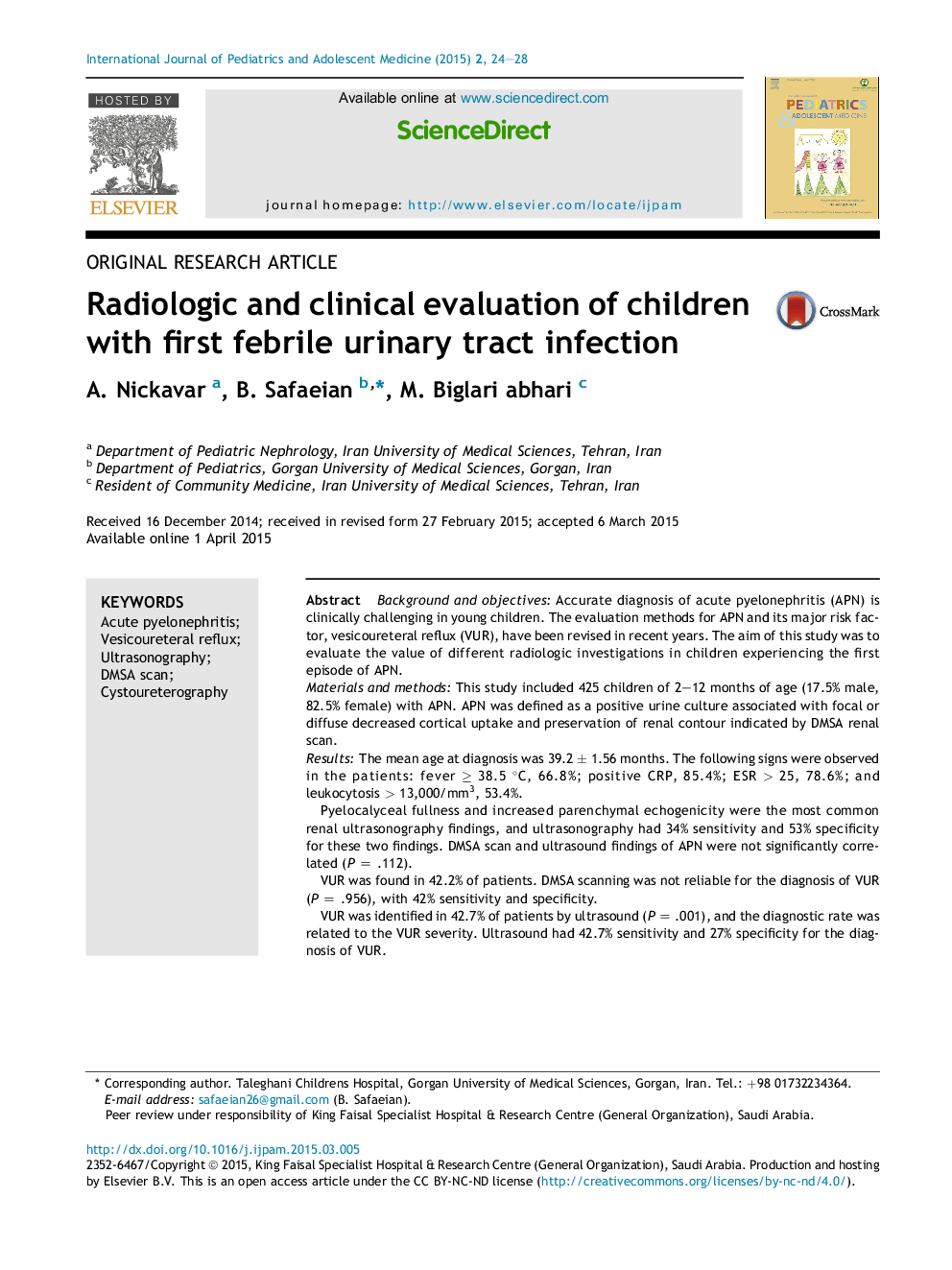| کد مقاله | کد نشریه | سال انتشار | مقاله انگلیسی | نسخه تمام متن |
|---|---|---|---|---|
| 4153709 | 1607049 | 2015 | 5 صفحه PDF | دانلود رایگان |
Background and objectivesAccurate diagnosis of acute pyelonephritis (APN) is clinically challenging in young children. The evaluation methods for APN and its major risk factor, vesicoureteral reflux (VUR), have been revised in recent years. The aim of this study was to evaluate the value of different radiologic investigations in children experiencing the first episode of APN.Materials and methodsThis study included 425 children of 2–12 months of age (17.5% male, 82.5% female) with APN. APN was defined as a positive urine culture associated with focal or diffuse decreased cortical uptake and preservation of renal contour indicated by DMSA renal scan.ResultsThe mean age at diagnosis was 39.2 ± 1.56 months. The following signs were observed in the patients: fever ≥ 38.5 °C, 66.8%; positive CRP, 85.4%; ESR > 25, 78.6%; and leukocytosis > 13,000/mm3, 53.4%.Pyelocalyceal fullness and increased parenchymal echogenicity were the most common renal ultrasonography findings, and ultrasonography had 34% sensitivity and 53% specificity for these two findings. DMSA scan and ultrasound findings of APN were not significantly correlated (P = .112).VUR was found in 42.2% of patients. DMSA scanning was not reliable for the diagnosis of VUR (P = .956), with 42% sensitivity and specificity.VUR was identified in 42.7% of patients by ultrasound (P = .001), and the diagnostic rate was related to the VUR severity. Ultrasound had 42.7% sensitivity and 27% specificity for the diagnosis of VUR.ConclusionDetermination of inflammatory markers is recommenced for the evaluation of children with APN. In addition, normal ultrasound is a valuable imaging tool for excluding high grade VUR.
Journal: International Journal of Pediatrics and Adolescent Medicine - Volume 2, Issue 1, March 2015, Pages 24–28
